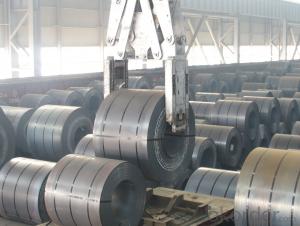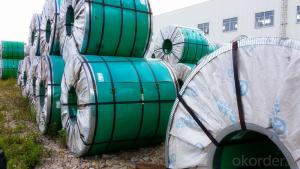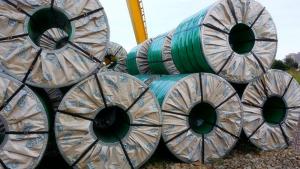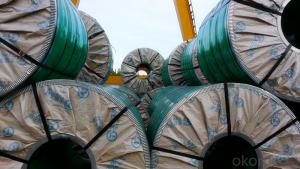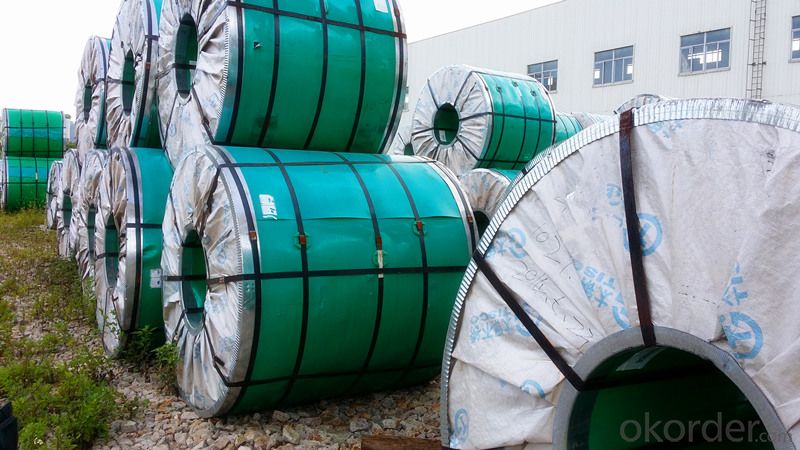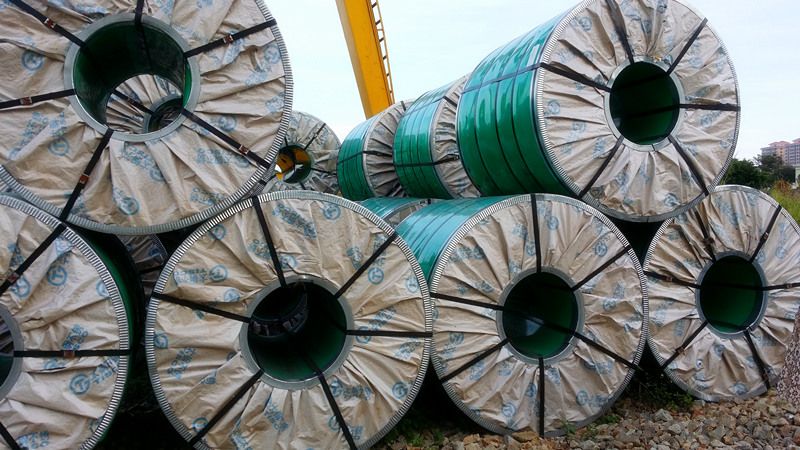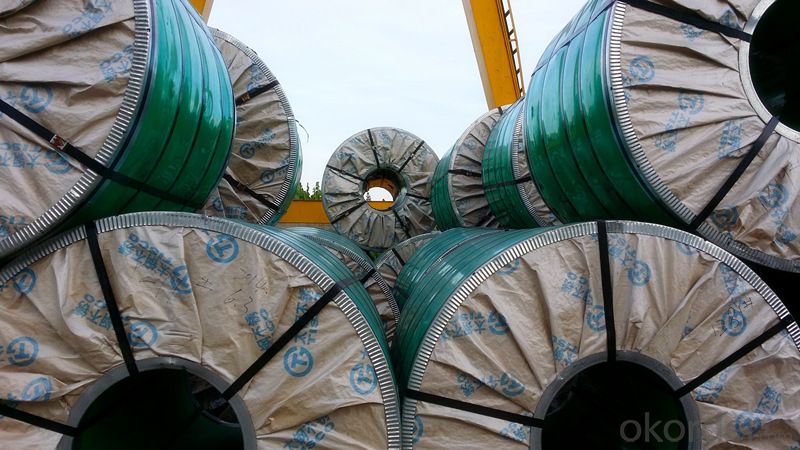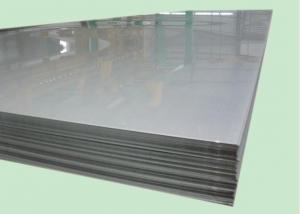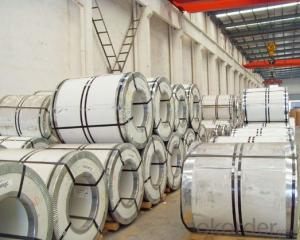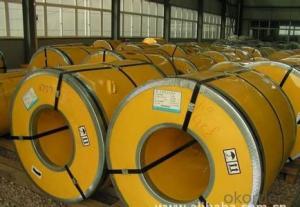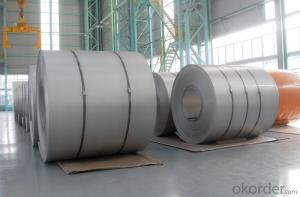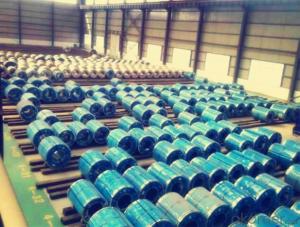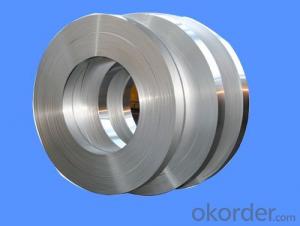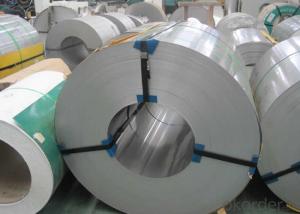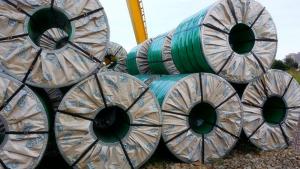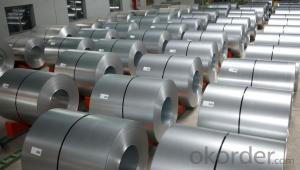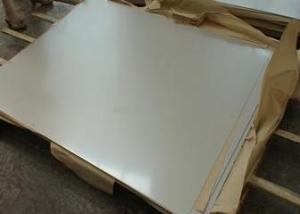Hot Rolled Stainless Steel Coil 430 Annealing and Pickling No.1 Finish
- Loading Port:
- Guangzhou
- Payment Terms:
- TT OR LC
- Min Order Qty:
- -
- Supply Capability:
- 5000 m.t./month
OKorder Service Pledge
OKorder Financial Service
You Might Also Like
Grade: | 400 Series | Standard: | JIS,AISI,ASTM,GB,DIN,EN | Length: | Coil |
Thickness: | 2.5mm,3.0mm, 4.0mm | Width: | 1000mm, 1219mm, 1240mm, 1500mm | Place of Origin: | China Mainland |
Brand Name: | CNBM | Model Number: | 430 | Type: | Coil |
Application: | Element Supports,Stove trim rings,Fasteners,Chimney Liners | Certification: | ISO | Certificate: | ISO9001:2008 |
Surface: | No.1 | Technique: | Hot Rolled | Experience: | About 20 years |
Stock Information: | In stock | Weight per coil: | 18-22 tons | Tolerance: | +/-0.1mm or less |
Model No.: | 430 |
|
|
|
|
Hot Rolled Stainless Steel Coil 430 Annealing and Pickling No.1 Finish
Article | Hot Rolled Stainless Steel Coil 430 |
Grade | 400 series |
Specification | 1m, 1.2m, 1.5m |
Surface | No.1 |
Type | Sheet / Coil |
Width | 1000mm, 1219mm, 1240mm, 1500mm |
Thickness | 2.5mm,3.0mm, 4.0mm |
Brand name | CNBM |
Parking | seaworthy wooden pallets or wooden cases,in 20' or 40' container or as per customers' requirements |
Payment | 30% in advance,70% after shipping, or L/C at sight |
Delivery Time | Stock materials, within7-15 days after received the deposit of T/T or L/C |
Hot Rolled Stainless Steel Coil 430 Annealing and Pickling No.1 Finish
Grade | C | Cr | Si | Mn | Mo | Ni | P | S |
| Max |
| Max | Max |
| Max | Max | Max |
430 | 0.12 | 16.0-18.0 | 0.75 | 1.00 | ----- | 0.6 | 0.04 | 0.03 |
- Q: How does stainless steel strip compare to other types of metal strips?
- Stainless steel strip is known for its exceptional corrosion resistance, high strength, and durability, which sets it apart from other types of metal strips. Unlike carbon steel or aluminum strips, stainless steel strip does not easily rust or stain, even in harsh environments. This property makes it ideal for applications where exposure to moisture, chemicals, or extreme temperatures is a concern. In terms of strength, stainless steel strip is often stronger than other metal strips, allowing it to withstand heavy loads and high stress applications. It also has excellent ductility, which means it can be easily formed and shaped into various configurations without losing its structural integrity. Another advantage of stainless steel strip is its aesthetic appeal. It has a sleek and polished appearance that is often desired in architectural, decorative, and industrial applications. Additionally, stainless steel strip is easy to clean and maintain, making it a popular choice in the food processing and medical industries where hygiene is critical. While stainless steel strip does have numerous advantages, it may not be suitable for every application. It tends to be more expensive compared to other metal strips such as carbon steel or aluminum. Additionally, stainless steel strip may have lower electrical and thermal conductivity compared to copper or other metals. Ultimately, the choice of metal strip material depends on the specific requirements of the application. Stainless steel strip is a preferred choice when corrosion resistance, strength, durability, and aesthetics are of utmost importance, but it is essential to consider other factors such as cost and conductivity when making a decision.
- Q: What is the typical lead time for stainless steel strip production?
- The typical lead time for stainless steel strip production can vary depending on various factors such as the complexity of the order, the quantity required, and the current market conditions. Generally, lead times can range from a few weeks to several months. For standard stainless steel strip production, where the specifications and quantity required are within normal limits, the lead time is typically shorter. In such cases, it may take around 4-8 weeks for the production process, including material sourcing, processing, and quality control, to be completed. However, for customized or specialty stainless steel strip production, which involves specific dimensions, finishes, or unique requirements, the lead time can be longer. It may require additional time for design consultations, tooling development, and testing, resulting in lead times of 2-6 months or even more. External factors such as supply and demand dynamics, availability of raw materials, and production capacities can also influence lead times. During periods of high demand or when there are supply chain disruptions, lead times may increase due to increased order volumes and potential delays in material sourcing. It is important to communicate with the stainless steel strip manufacturer or supplier to get an accurate estimate of the lead time based on your specific requirements. They will consider various factors and provide you with a more precise timeline for production and delivery.
- Q: Can 111 stainless steel strips be used in the pharmaceutical industry?
- Yes, 111 stainless steel strips can be used in the pharmaceutical industry depending on their specific characteristics and properties. Stainless steel is often used in pharmaceutical manufacturing due to its corrosion resistance, hygiene, and durability. However, it is important to ensure that the specific type of stainless steel (such as 111) meets the industry's requirements and standards before considering its use.
- Q: What is the price range for stainless steel strips?
- The cost of stainless steel strips can fluctuate due to different elements like thickness, width, and grade. Typically, prices for stainless steel strips can vary between $1 and $10 per square foot. Nevertheless, for top-notch or customized stainless steel strips, the cost may rise. To establish an accurate price range, it is crucial to take into account the precise requirements and specifications of the desired stainless steel strips. It is advisable to directly communicate with suppliers or manufacturers for more precise and up-to-date pricing information.
- Q: What are the surface finishes available for 111 stainless steel strips?
- There are several surface finishes available for 111 stainless steel strips. Some common finishes include: 1. No. 1 Finish: This is a hot-rolled, annealed, and pickled finish that is characterized by a rough, dull appearance. It is commonly used for industrial applications where appearance is not a priority. 2. No. 2B Finish: This is a bright, cold-rolled finish that is commonly used for applications that require a smooth and reflective surface. It is often used in decorative and architectural applications. 3. No. 2D Finish: This is a dull, cold-rolled finish that is similar to the No. 2B finish but has a slightly rougher surface. It is often used for applications that require a smooth surface but do not require a high level of reflectivity. 4. No. 3 Finish: This is a semi-polished finish that is obtained by using abrasives with a finer grit compared to the No. 2D finish. It provides a smoother and more uniform surface, making it suitable for applications that require a visually appealing finish. 5. No. 4 Finish: This is a brushed finish that is achieved by using abrasive belts or brushes to create a consistent pattern of fine lines on the surface. It is commonly used for decorative purposes, such as in architectural and kitchen applications. 6. No. 8 Mirror Finish: This is a highly reflective finish that is achieved by polishing the surface to a mirror-like appearance. It is often used in applications that require a high level of reflectivity, such as in mirrors or decorative items. These are just a few of the surface finishes available for 111 stainless steel strips. The choice of finish depends on the specific requirements of the application, including aesthetics, corrosion resistance, and functionality.
- Q: What are the dimensions of stainless steel strips?
- The dimensions of stainless steel strips vary depending on their specific application and manufacturer. However, common dimensions for stainless steel strips range from 0.1 to 3.0mm in thickness and 10 to 600mm in width.
- Q: What is the creep resistance of stainless steel strips?
- The ability of stainless steel strips to withstand deformation or elongation under sustained high temperatures and constant stress is referred to as their creep resistance. Compared to other materials, stainless steel is well-known for its excellent creep resistance. This is primarily attributed to its high chromium content, which leads to the formation of a protective oxide layer on the steel's surface, thereby enhancing its resistance to oxidation and creep deformation. Furthermore, stainless steel strips often contain additional alloying elements like nickel, molybdenum, or titanium, which further contribute to their creep resistance. These alloying elements serve to strengthen the steel and improve its capacity to resist deformation at elevated temperatures. Consequently, stainless steel strips are a dependable choice for applications where creep resistance is crucial, such as in high-temperature environments or under constant stress.
- Q: Can stainless steel strips be formed into coils or rolls?
- Yes, stainless steel strips can be formed into coils or rolls. Stainless steel strips are typically produced in coil form and can easily be wound into a coil or roll shape. This makes them convenient for transportation, storage, and further processing. The process of forming stainless steel strips into coils or rolls involves a combination of bending, coiling, and winding techniques, which allow for the creation of compact and tightly wound stainless steel coils. These coils or rolls can then be used in various applications such as manufacturing, construction, automotive, and many others. The ability to form stainless steel strips into coils or rolls adds to their versatility and makes them a popular choice in many industries.
- Q: Can stainless steel strips be customized according to specific requirements?
- Yes, stainless steel strips can be customized according to specific requirements. The customization can include variations in dimensions, thickness, surface finish, and other specifications to meet the specific needs of different applications.
- Q: Can stainless steel strips be painted or coated?
- Yes, stainless steel strips can be painted or coated. However, it is important to properly prepare the surface before applying any paint or coating to ensure adhesion and durability. This typically involves cleaning the stainless steel thoroughly and using a primer or etching solution to promote better bonding. After the surface is prepared, various types of paints or coatings can be applied, such as epoxy, acrylic, or enamel. It is important to select a paint or coating that is specifically formulated for use on stainless steel to ensure the best results. Additionally, proper drying and curing times should be followed according to the manufacturer's instructions to achieve the desired finish and durability.
Send your message to us
Hot Rolled Stainless Steel Coil 430 Annealing and Pickling No.1 Finish
- Loading Port:
- Guangzhou
- Payment Terms:
- TT OR LC
- Min Order Qty:
- -
- Supply Capability:
- 5000 m.t./month
OKorder Service Pledge
OKorder Financial Service
Similar products
Hot products
Hot Searches
Related keywords
